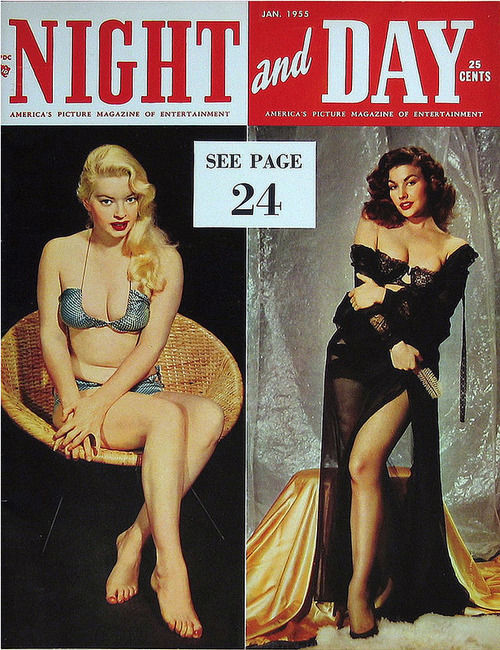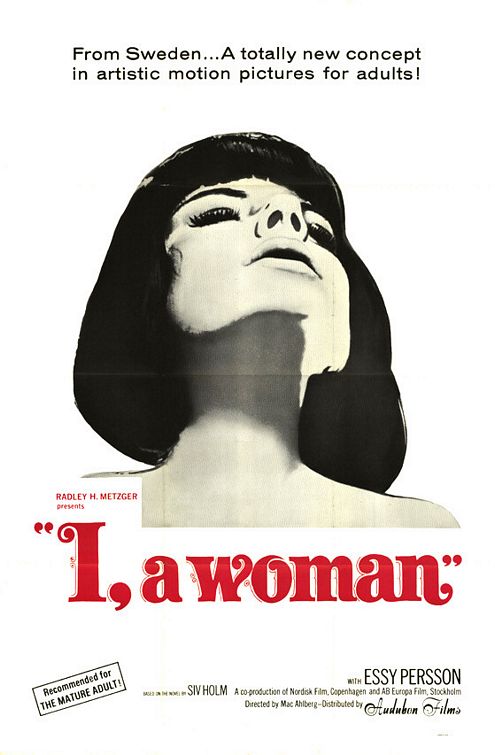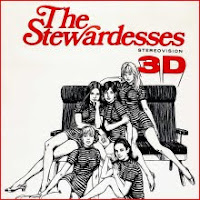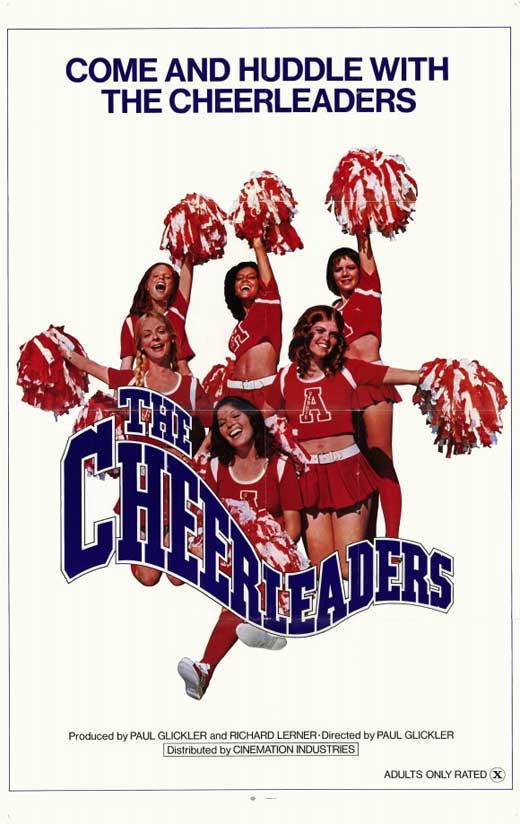 A little history, as best I remember it. In New York, in the 50s and early 60s, there were theaters on 42nd Street between 6th and 7th Avenues that showed skin flicks. These were mostly sunbathing and health movies, with lots of volleyball, but they also showed some amazing foreign films, like "Smiles of a Summer Night," because at the time, European films could show bare breasts but American films couldn't. (Some people will remember this. Here's something no one will remember except me, because at the time -- 1954 -- I was 14 and impressionable, and was occasionally able to get hold of magazines like "Night and Day" which featured pictures of Lili St. Cyr and Tempest Storm and the like. Anyway, one of them had a brief item that starlet Peggie Castle, in the new Western "The Yellow Tomahawk," with Rory Calhoun, would be wearing a flesh-colored bikini that would make her appear topless. I vowed to see "The Yellow Tomahawk," but it never came to our local theater.)
A little history, as best I remember it. In New York, in the 50s and early 60s, there were theaters on 42nd Street between 6th and 7th Avenues that showed skin flicks. These were mostly sunbathing and health movies, with lots of volleyball, but they also showed some amazing foreign films, like "Smiles of a Summer Night," because at the time, European films could show bare breasts but American films couldn't. (Some people will remember this. Here's something no one will remember except me, because at the time -- 1954 -- I was 14 and impressionable, and was occasionally able to get hold of magazines like "Night and Day" which featured pictures of Lili St. Cyr and Tempest Storm and the like. Anyway, one of them had a brief item that starlet Peggie Castle, in the new Western "The Yellow Tomahawk," with Rory Calhoun, would be wearing a flesh-colored bikini that would make her appear topless. I vowed to see "The Yellow Tomahawk," but it never came to our local theater.) 
Back to 42nd Street -- not the well-known block between 7th and 8th, but its second banana to the east. Because some very good foreign films with nudity played the block, nudity came to be associated with dramatic seriousness -- that is, you could get away with it if you had some heavy drama. So the first real skin flick to hit America in a big way was the Swedish import "I, a Woman," in 1965, followed by "I am Curious (Yellow)" in 1967, which actually should have been banned in America for its open embrace of socialism rather than its open embraces (it and its sequel, "I am Curious (Blue)" were named after the colors of the welfare-state Swedish flag). The Swedish films were hugely successful at the box office, and of course hugely controversial.
By this time, Russ Meyer was making movies in America, including classics like "Faster, Pussycat, Kill, Kill," and things were opening up a little, but just a little. Meyer's films were not, at that time, widely distributed, certainly not in major theater chains. In 1969, an American film called "The Stewardesses" came out. I remember going to see it, although I remember absolutely nothing about it, except that I saw it with a group of friends. We were sitting
 in the middle of the theater near the front, and at some point in the middle I had to go to the bathroom, which meant standing up and working my way past the row of moviegoers. I did so, clumsily, then turned and announced loudly, "I've never been so offended in my life. You told me we were going to see Mary Poppins!" and walked out.
in the middle of the theater near the front, and at some point in the middle I had to go to the bathroom, which meant standing up and working my way past the row of moviegoers. I did so, clumsily, then turned and announced loudly, "I've never been so offended in my life. You told me we were going to see Mary Poppins!" and walked out.But I digress. "The Stewardesses," to the best of my recollection, was a sort of "Where the Boys Are" with lots of skin, the sex-and-retribution theme so deeply entrenched in American Calvinist culture.
And at about that time, Paul Glickler, Richard Lerner and I had gotten financial backing to make a modest-budget skin flick, and responding to the box-office success of "The Stewardesses," we decided to call it "The Cheerleaders."
But we found we couldn't do the pseudo-heavy drama of "The Stewardesses," or even the somewhat better pseudo-heavy drama of "I, a Woman" or the not entirely pseudo-political message of "I am Curious (Yellow)." Our minds just didn't work that way. We ended up writing a flat-out comedy.
Which, it turned out, got us in trouble with our financial backers, who wanted the proven success formula of sex and melodrama (also, it was still believed that you could get away with more sex if your movie had "redeeming social value," which comedy clearly did not). So they ordered us, on pain of withdrawing financial support, to take out all the comedy and make it more like "I, a Woman."
Which we could not bring ourselves to do. But we had to sneak the comedy in, which meant taking out some of the funniest scenes in the original script. But we got a bunch of them in. One thing I
 always liked about "The Cheerleaders" script -- usually in sex comedies, the setups -- seductions, seductions foiled, etc. -- are the comedy scenes. In "The Cheerleaders," we played the actual sex scenes for comedy, which I believe had not been done before.
always liked about "The Cheerleaders" script -- usually in sex comedies, the setups -- seductions, seductions foiled, etc. -- are the comedy scenes. In "The Cheerleaders," we played the actual sex scenes for comedy, which I believe had not been done before.Anyway, our financial backers were horrified by the finished product -- until they saw the audience reaction. People loved it, and they loved it for the comedy. So they pulled back the movie, and retooled a whole new advertising campaign -- the comedy smash of the year! -- and released it as a double bill with Ralph Bakshi's animated movie of R. Crumb's "Fritz the Cat." "The Cheerleaders" was the hit movie that carried the double bill, and it opened to national release in a major theater chain, Red Carpet Theaters, following "Man of La Mancha."
And became a minor cult classic. Got some good reviews, with the exception of the Boston Phoenix. Their reviewer hated it so much that for the next several months, every other movie he hated got an "at least, it's not as bad as 'The Cheerleaders.'" It is even mentioned in a John Grisham novel.
And that's pretty much the whole story, except that in the late 70s, the great New York art film house, Bleecker Street Cinema, did a retrospective of classic skin flicks, including "I, a Woman," the "I am Curious" movies, and "The Cheerleaders." I went to see it, figuring rightly that it would be my only chance to see a movie of mine in an art film house. As I was walking in, a couple were walking out, and I overheard this snippet of conversation.
He: I really liked that movie.
She: Yeah, you would.
He: No, I mean I really liked the writing. I thought it was incredible well-written.
It was all I could do to keep from grabbing him and saying, "Honest? Honest to God?"